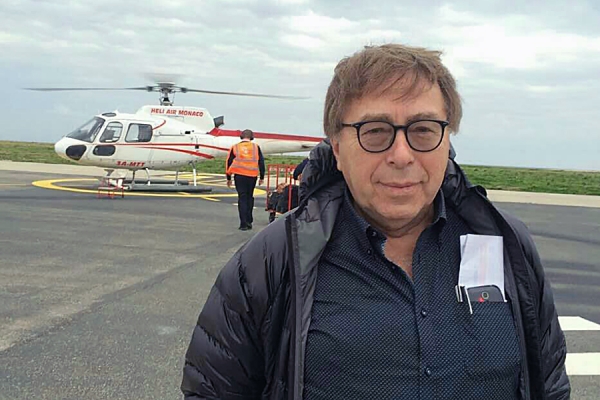 Technology to improve welds will revolutionize automotive assembly, says physics professor Roman Maev.
Technology to improve welds will revolutionize automotive assembly, says physics professor Roman Maev.
UWindsor researchers are designing a high-tech ‘smart’ spot welder combining ultrasound and Artificial Intelligence (AI) to dramatically improve the quality of welds in automotive body mass manufacturing.
The Institute for Diagnostic Imaging Research (IDIR) teamed with co-applicant Robin Gras, professor of computer science, and industry partners Canadian Electrocoating Ltd. and Japanese Nadex Co. Ltd. on their project “Development of a new adaptive spot weld controller driven by an ultrasonic monitoring system.” With a Natural Sciences and Engineering Research Council (NSERC) Alliance grant and partner money, the project award totals $962,000 over three years.
“Our new and innovative approach for ‘zero-defective’ mass-manufacturing production using ultrasonic real-time monitoring of bonded joints quality is based on deep learning neural network,” says physics professor Roman Maev, director of IDIR.
Resistance welding typically employs 4,000 to 6,000 individual spot welds on each vehicle. The joining technology plays a vital role in the automotive industry and relies on welders working in fast-paced body shops to manage quality control.
The IDIR team has developed a state-of-the-art quality monitoring technology that incorporates an ultrasonic sensor to boost quality of joining.
“A piezo-electric sensor, built into the welding electrode, is working to send sound waves into the welded sheets and receive the reflections from the internal structure of the joint,” says Dr. Maev.
“Ultrasounds are precise tools that give exact information and, in this case, allow the determination of when the melting begins and what are the main dimensions of the weld.”
This ultrasound is coupled with AI-driven adaptive controllers. The learning technology is designed to increase the detection rates, as well as promptly react to any disturbance in the regular welding process.
“We’ve created a smart device that uses AI to learn how to improve welding, and this is a perfect tool for AI because there is a massive amount of data to draw on since each factory can generate tens of thousands of spot welds each day,” says Maev.
Original algorithms allow the system to make immediate decisions and send an in-line request to the welder to make modifications to ensure the quality of each weld.
“That welding information is delivered directly back and the AI will learn what parameters need to change for any material, whether it about pressure or voltage, and we see those results right away,” says Maev. “The ultrasound controls every situation, every second, and AI controls the process. Coupling these two powerful tools is revolutionary.”
In this sense, he says, a solution with a high probability of success involves the use of both techniques combined: ultrasonic sensors placed inside the welding gun which triggers the decision-making algorithm from the adaptive controller.
“The increased use of new materials in automotive bodies, such as high strength steels and aluminum alloys, brings some challenges, since its welding behaviour tends to be more unstable compared to the conventional steels usually applied.”
Maev says this grant and the industry partnerships create incredible opportunities for training students in real-world applications and helping them learn skills in a manufacturing environment.
“Students will get direct experience with industrial plants and be involved with science communications with international industrial partners,” he says. “Even without travel, this is a great networking and learning opportunity for undergraduates and graduate students alike.”
Once the whole complex of various aspects of this problem are resolved and demonstrate persistent results, Maev says he is confident it will completely revolutionize the mass-manufacturing process using artificial intelligence at automotive assembly plants globally.
“This technology will bring big savings in production cycle time, reduce labour costs, and eliminate unnecessary destructive tests, which are still part of today’s quality inspection process,” he says. “The target of our research at the University of Windsor is to achieve the ambitious target: zero-defective massive production.”
—Sara Elliott
